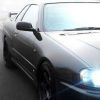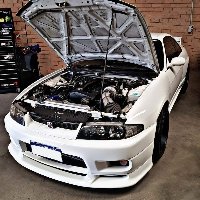Brake Pad Install Help
Announcements
-
Similar Content
-
Latest Posts
-
Thanks for that, I'll check it all out. I can always do the brakes last anyway if its a problem. The 16's are super cool, if they do fit I'll cruise around with them for a bit.
-
Well, that's kinda the point. The calipers might interfere with the inside of the barrels 16" rims are only about 14" inside the barrels, which is ~350mm, and 334mm rotors only leave about 8mm outboard for the caliper before you get to 350, And.... that;s not gunna be enough. If the rims have a larger ID than that, you might sneak it in. I'd be putting a measuring stick inside the wheel and eyeballing the extra required for the caliper outboard of the rotor before committing to bolting it all on.
-
OK, so again it has been a bit of a break but it was around researching what had been done since I didn't have access to Neil's records and not everything is obvious without pulling stuff apart. Happily the guy who assembled the engine had kept reasonable records, so we now know the final spec is: Bottom end: Standard block and crank Ross 86.5mm forgies, 9:1 compression Spool forged rods Standard main bolts Oil pump Spool billet gears in standard housing Aeroflow extended and baffled sump Head Freshly rebuilt standard head with new 80lb valve springs Mild porting/port match Head oil feed restrictor VCT disabled Tighe 805C reground cams (255 duration, 8.93 lift) Adjustable cam gears on inlet/exhaust Standard head bolts, gasket not confirmed but assumed MLS External 555cc Nismo injectors Z32 AFM Bosch 023 Intank fuel pump Garret 2871 (factory housings and manifold) Hypertune FFP plenum with standard throttle Time to book in a trip to Unigroup
-
Well, apparently they do fit, however this wont be a problem if not because the car will be stationary while i do the suspension work. I was just going to use the 16's to roll the old girl around if I needed to. I just need to get the E90 back on the road first. Yes! I'm a believer! 🙌 So, I contacted them because the site kinda sucks and I was really confused about what I'd need. They put together a package for me and because I was spraying all the seat surfaces and not doing spot fixes I decided not to send them a headrest to colour match, I just used their colour on file (and it was spot on). I got some heavy duty cleaner, 1L of colour, a small bottle of dye hardener and a small bottle of the dye top coat. I also got a spray gun as I needed a larger nozzle than the gun I had and it was only $40 extra. From memory the total was ~$450 ish. Its not cheap but the result is awesome. They did add repair bits and pieces to the quote originally and the cost came down significantly when I said I didn't need any repair products. I did it over a weekend. The only issues I had were my own; I forgot to mix the hardener into the dye two coats but I had enough dye for 2 more coats with the hardener. I also just used up all the dye because why not and i rushed the last coat which gave me some runs. Thankfully the runs are under the headrests. The gun pattern wasn't great, very round and would have been better if it was a line. It made it a little tricky to get consistent coverage and I think having done the extra coats probably helped conceal any coverage issues. I contacted them again a few months later so I could get our X5 done (who the f**k thought white leather was a good idea for a family car?!) and they said they had some training to do in Sydney and I could get a reduced rate on the leather fix in the X5 if I let them demo their product on our car. So I agreed. When I took Bec in the E39 to pick it up, I showed them the job I'd done in my car and they were all (students included) really impressed. Note that they said the runs I created could be fixed easily at the time with a brush or an air compressor gun. So, now with the two cars done I can absolutely recommend Colourlock. I'll take pics of both interiors and create a new thread.
-







Recommended Posts
Create an account or sign in to comment
You need to be a member in order to leave a comment
Create an account
Sign up for a new account in our community. It's easy!
Register a new accountSign in
Already have an account? Sign in here.
Sign In Now